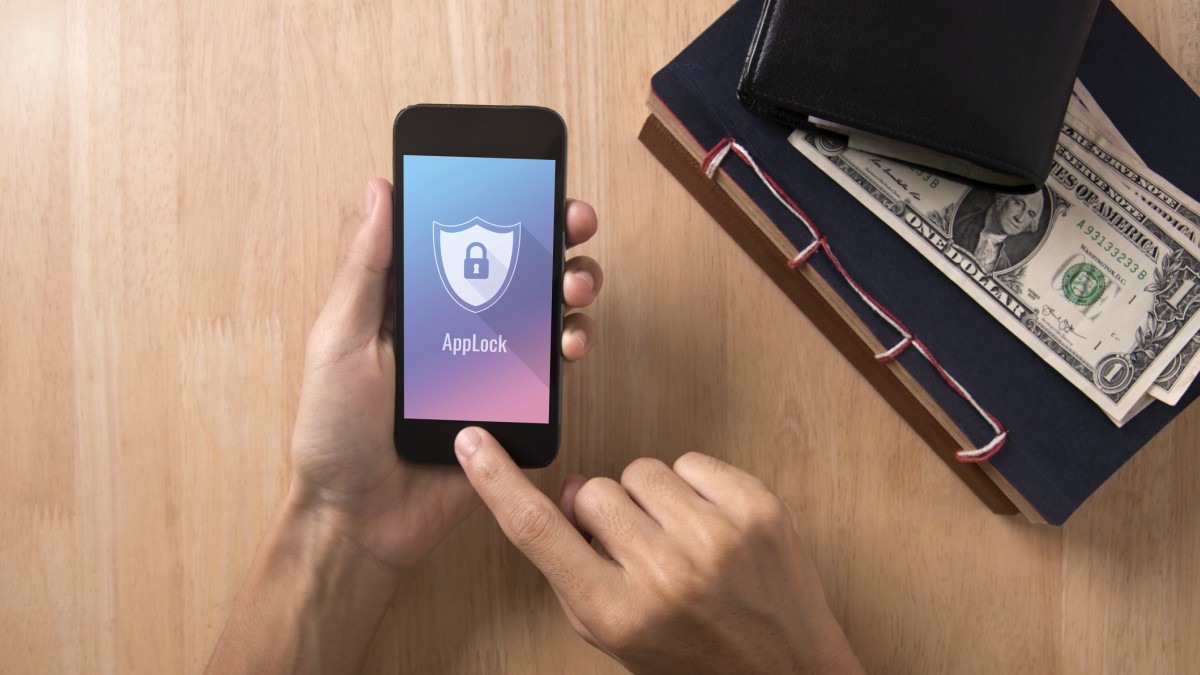You probably have a lock of some sort on your phone to keep it secure.
If you don’t, you should get one. Tap here to see which lock is the most secure for your smartphone. But what about your apps? It may seem unnecessary to secure them when your phone is already locked, but it provides an extra layer of protection from snoops and thieves.
Individual app passwords can protect sensitive information found in banking or other personal apps. They can also make you hesitate before opening Facebook for the fifth time in the last 10 minutes.
Android smartphones have a few ways of locking individual apps to help protect your privacy and keep you productive. Let’s start with how to protect your apps.
How to put a password on individual apps
The secret to locking individual apps in Android is other apps. Third-party app-locking apps can be obtained in the Google Play Store and can be used to generate passcodes or patterns you must enter before you can access a particular app.
The most recommended locking app for this purpose is AppLock. There are a few apps called AppLock on the Google Play Store, and you’d be OK with most of them, but the one we’ve seen most often, and like the best, is the free AppLock made by DoMobile Lab.
Using AppLock, or any locking app, is pretty simple:
- Download the app to your phone.
- Open the app, and when prompted, input a password to use with individual apps. Make sure it’s not the same as the passcode you use to lock your phone.
- Give AppLock permission to open on top of other apps when prompted (this will create the lock later).
- Select an app you wish to lock with the passcode you’ve created while inside AppLock, then tap the “Lock” button.
- You’ll be notified that the lock was successful. Try to open that app to confirm.
We like AppLock because it can enable fingerprint locking to protect individual apps in addition to a passcode. It also offers a cleaner that can free up storage space on your phone.
A battery saver within it can help you save power and extend your battery life, a cooler to keep your phone’s CPU at a safe temperature, and a booster to improve your phone’s speed. Tap or click for other ways of increasing your Android phone’s speed.
If you want to lock apps to be more productive or more secure, and you don’t need bells and whistles, we have other apps we like as well:
Smart AppLock
Use your fingerprint or choose between pattern locks or a PIN to protect your apps. Smart AppLock also boasts less memory usage and no delay after a restart of your device. It also sends you break-in alerts when someone tries to open an app with an invalid code.
AppLock Pro
AppLock Pro is the only app that costs money, but we think its efficacy and feature of taking a picture if an incorrect passcode is entered make it worth its $.99-cent price point. You can also set up a “Crash screen,” which hides which apps are locked and aren’t.
Another worthy feature is the “Prevent Force Close/Uninstall” of the app, so would-be thieves or snoops can’t find a workaround.
Other Android security features to use
You can utilize a few other Android features to protect apps with lots of personal data stored on them and protect your phone overall. The first one is Screen Pinning, and the other, available on Samsung Android phones, is Secure Folder.
Screen Pinning
With Screen Pinning, you can lock your phone’s screen to a particular app. If any attempt is made to leave the app or close it, your lock screen will activate.
For example, if a thief or snoop goes right to your banking app, Screen Pinning won’t allow them to get to other apps. Just make sure you stay logged out of your banking app when you’re not using it.
To activate Screen Pinning on your Android phone (if you have Android OS 9.0 Pie or later):
- Go to Settings and tap on “Security & Location.”
- Tap “Advanced,” then “Screen Pinning.”
- Toggle Screen Pinning to the “on” position, then toggle “Ask for PIN before unpinning” to “on” as well.
- Tap the “Overview” button (the square one) at the bottom of your screen.
- Tap on an app you want to pin, and tap “Pin” when prompted. Then tap “Got it.”
Note: There are many types of Androids, and the instructions may differ for your device.
Screen Pinning could also be used to keep your phone in a particular game for children, so they can’t click out of the app. To unpin an app, tap “Back” (the triangle icon) and “Overview” simultaneously, then enter your PIN.
Secure Folder
Secure Folder is a feature on Samsung phones that lets you put apps into a lockable virtual folder. You can lock with a passcode, a PIN, a whole password or even your fingerprint or iris.
To put apps in a Secure Folder on your Samsung Android phone:
- Go to Settings and select “Biometrics and security.”
- Tap on “Secure Folder,” then “Lock type.”
- Choose between Pattern, PIN, Password or a biometric option like fingerprint or iris, and create that password.
- Go to your app drawer and tap “Secure Folder.” Tap “Add apps.”
- Select all the apps you want in the folder, then tap “Add” in the upper right corner.
- Tap “Lock” back in the Secure Folder menu.
- Try to access an app you added to the folder and make sure it prompts you for your passcode or fingerprint.
As you can see, there are a few ways to lock an individual app on your Android phone. We like using third-party apps, as these can come with other helpful features and offer multiple lock options.
Secure Folder and Screen Pinning are great security features built into Android phones, so it’s good to know they exist and can offer you some protection. Tap or click here for another important Android security feature.
What about locking apps on iPhone?
Unfortunately, Apple lags behind Android in this regard. Sure, you can lock your iPhone or iPad by setting a passcode or taking advantage of Touch ID and Face ID. Although some apps like Whatsapp have built-in lock mechanisms, Apple doesn’t offer any native feature that lets you lock apps.
You can also take advantage of the “Screen Time” feature to lock an app for a particular period of time. (This is a super helpful tip when you need to force yourself to put the phone down and focus on something else.)
We put together a step-by-step guide to help you control access to your iPhone apps. Tap or click here to create special passcodes and protect the data in your apps.

